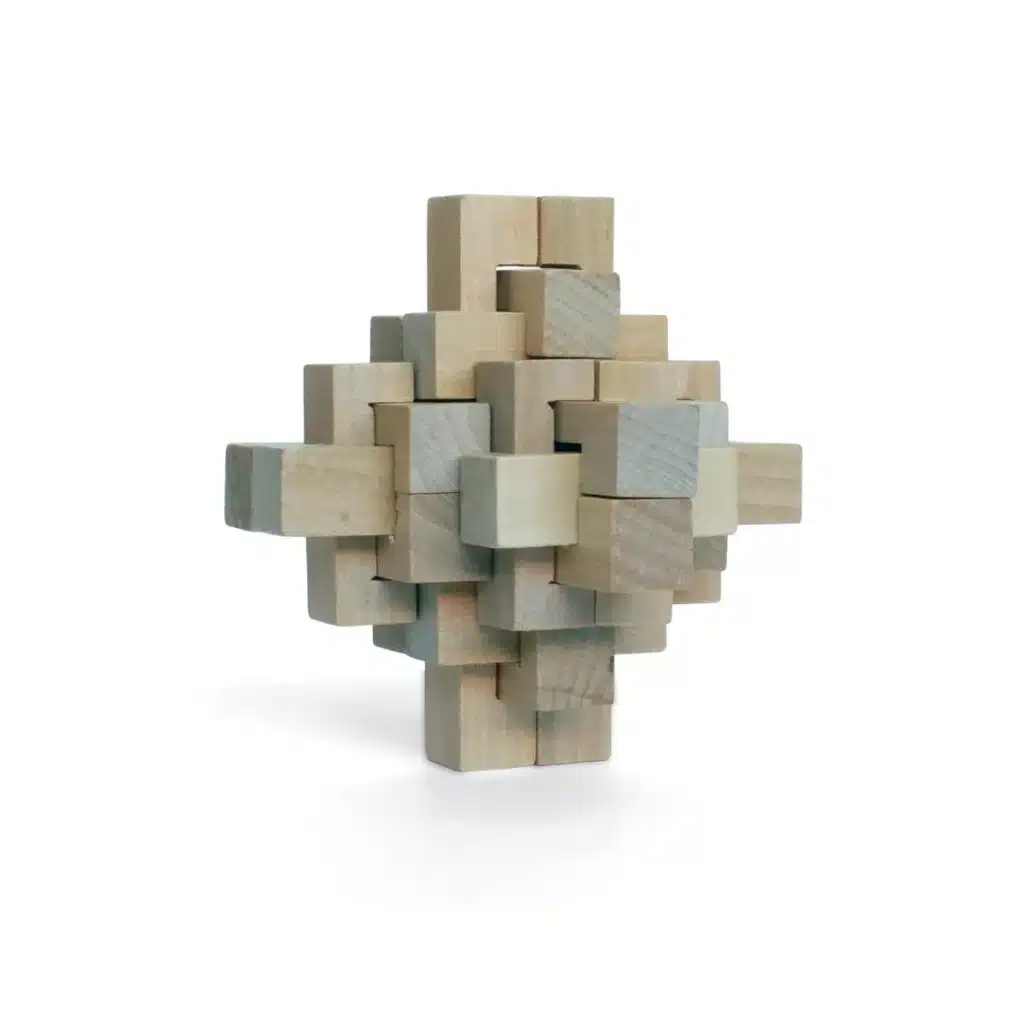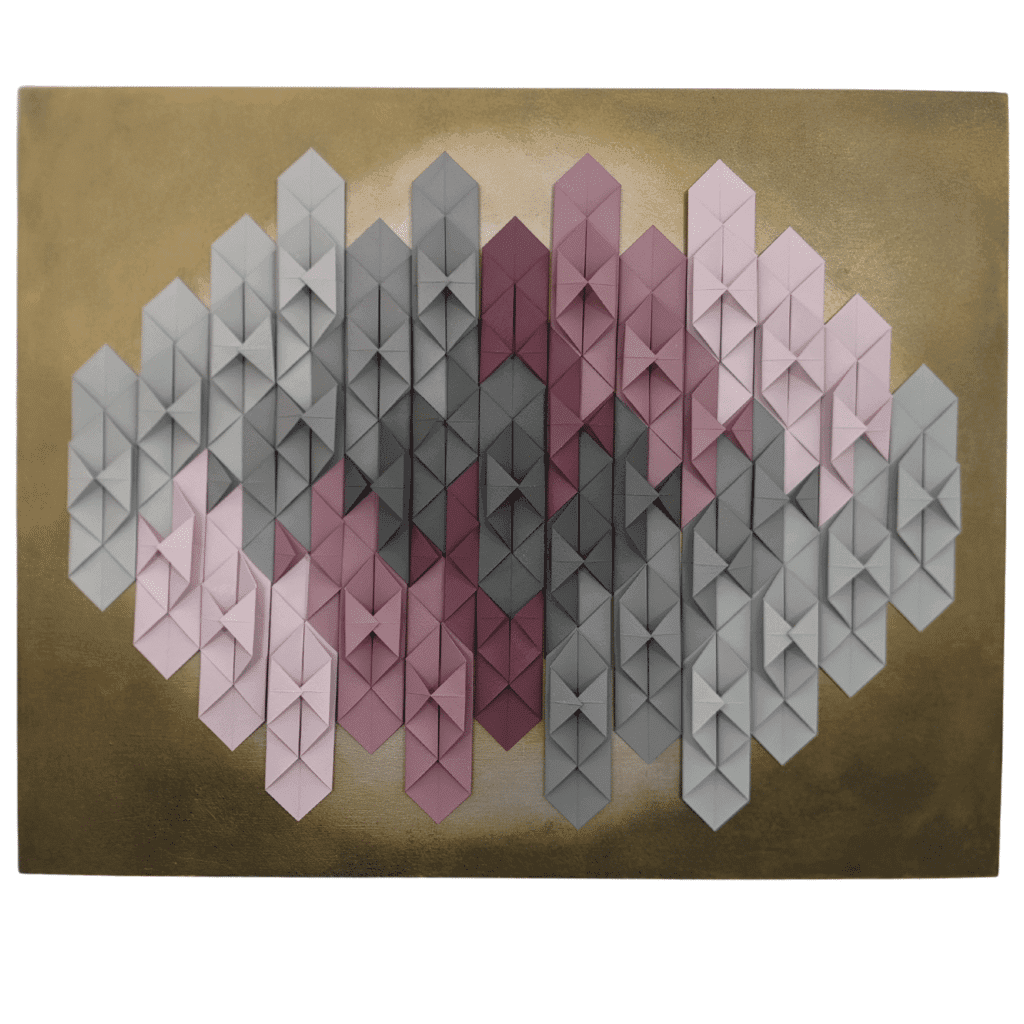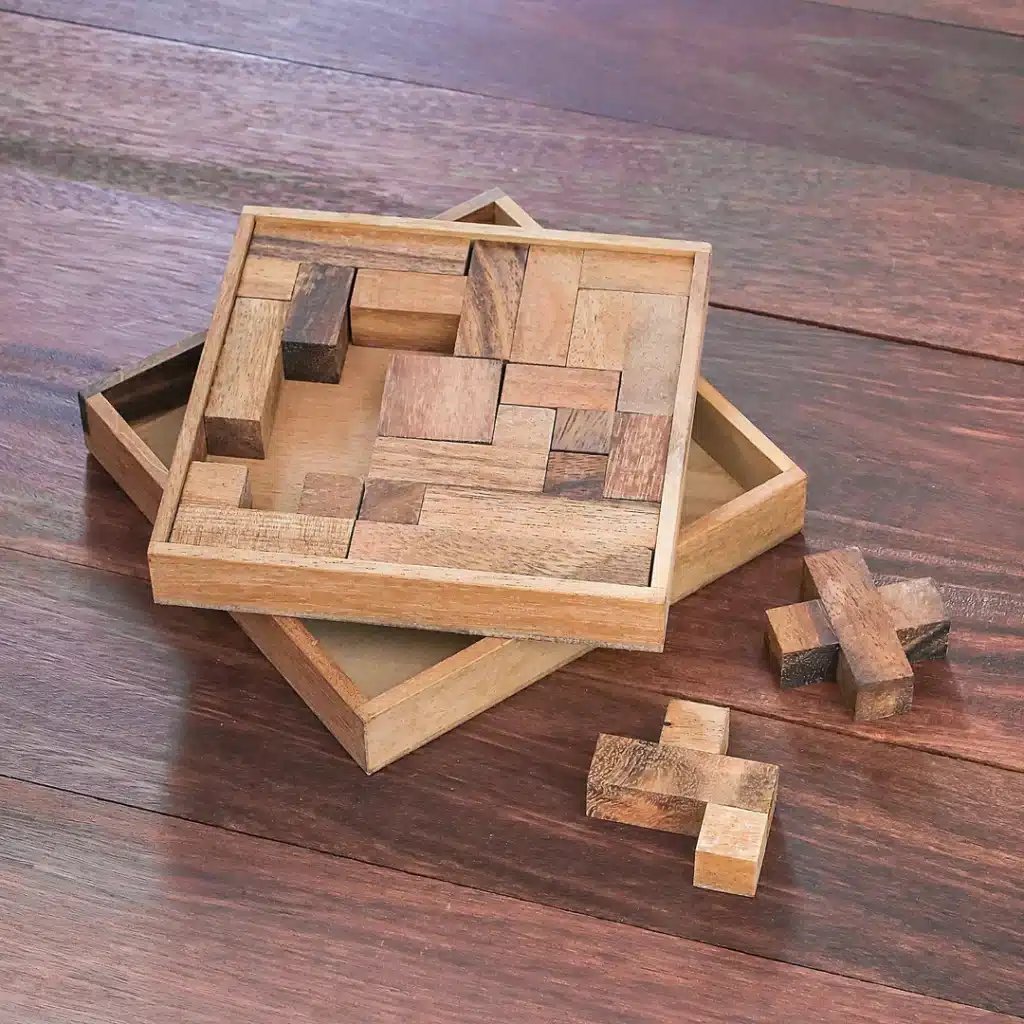Here’s an updated version of the blog post with a more informative and detailed tone, emphasizing the cognitive benefits of geometric puzzles and origami, while drawing clear connections to your modular origami art.
Exploring the Cognitive Benefits of Geometric Puzzles Through the Art of Modular Origami
When we think of art, we often focus on its aesthetic value or emotional impact. However, some forms of art, particularly those rooted in geometry and structure, offer additional benefits that engage the mind in profound ways. Modular origami, a unique fusion of mathematical precision and artistic expression, stands out as one such form of art. Its structured approach to paper folding mimics the complexity of geometric puzzles, providing an engaging experience that fosters cognitive development.
As an origami mixed media artist, my work often bridges the gap between visual beauty and intellectual stimulation. The modular nature of my origami sculptures transforms them into interactive experiences, where the viewer can engage with the forms as they would with a geometric puzzle—exploring shapes, patterns, and structure. In this post, we’ll dive into the cognitive benefits of geometric puzzles and discuss how my modular origami practice embodies these same principles, creating art that enriches both the mind and the senses.
Cognitive Benefits of Geometric Puzzles: A Deeper Look
Geometric puzzles, whether they take the form of traditional tangrams, jigsaw puzzles, or modern 3D puzzles, offer more than just a pastime. They actively engage the brain, encouraging mental growth and strengthening various cognitive abilities. Below are some of the key cognitive benefits associated with solving geometric puzzles:
Spatial Reasoning and Visual Perception
One of the most notable cognitive benefits of geometric puzzles is their ability to enhance spatial reasoning and visual perception. Spatial reasoning involves the mental manipulation of objects, understanding how different shapes fit together, and visualizing transformations. Visual perception, on the other hand, refers to how we interpret and understand visual information from the world around us.
- How Geometric Puzzles Help: By solving geometric puzzles, individuals develop the ability to mentally rotate and visualize shapes. This practice strengthens spatial reasoning, a skill that is essential in fields such as architecture, engineering, design, and even navigation. As puzzlers manipulate pieces, they gain a better understanding of spatial relationships and improve their visual perception skills.
- Origami as a Spatial Challenge: Similarly, modular origami art relies on the same principles of spatial reasoning and visual perception. When I design and fold intricate origami modules, I must visualize how each fold will contribute to the final structure, and how multiple modules will fit together to create a cohesive whole. This process is not just about aesthetics—it requires a deep understanding of spatial dynamics. The act of folding paper into complex 3D forms mirrors the challenge of solving a geometric puzzle, making modular origami an excellent tool for enhancing spatial reasoning.
Problem-Solving and Critical Thinking
Both geometric puzzles and origami are grounded in problem-solving. To complete a puzzle or design an origami piece, you must work through challenges and obstacles, employing logic and critical thinking to find solutions.
- Geometric Puzzles and Logical Thinking: Solving a geometric puzzle requires careful analysis of the shapes and patterns involved. You must consider how different pieces relate to one another, often testing various configurations before finding the correct solution. This process strengthens critical thinking and encourages the development of logical, step-by-step approaches to problem-solving.
- Modular Origami as Problem-Solving Art: In modular origami, problem-solving is woven into every step of the process. Each fold is a decision, and the arrangement of modules demands strategic thinking. For example, when creating a multi-panel origami sculpture, I need to consider not only the visual composition but also the structural integrity of the piece. Like a geometric puzzle, each module must fit perfectly with the others to form a unified structure. This type of art invites viewers to engage in problem-solving as they interpret and understand the layers of complexity within each piece.
Cognitive Flexibility and Mental Agility
Cognitive flexibility refers to the brain’s ability to switch between different modes of thinking, adapt to new information, and approach problems from multiple perspectives. Geometric puzzles and modular origami both promote this type of mental agility.
- Flexibility in Geometric Puzzles: When solving geometric puzzles, individuals must often abandon their initial strategy and try different approaches. This shift in thinking fosters cognitive flexibility, a skill that is crucial for innovation and creative problem-solving in both personal and professional contexts.
- Modular Origami and Adaptive Thinking: The creation of modular origami sculptures similarly requires cognitive flexibility. As I assemble intricate designs, I may need to adapt the pattern, revise the fold, or alter the arrangement of modules to achieve the desired outcome. This flexibility in thinking encourages mental agility and fosters creativity, which is essential not only for producing art but also for tackling real-world challenges.
Memory and Attention to Detail
Geometric puzzles and origami both demand a high level of focus and memory. The process of solving a puzzle or completing an origami project requires sustained concentration, attention to detail, and the ability to recall patterns or previous attempts.
- Memory in Geometric Puzzles: As puzzlers work through a geometric puzzle, they must remember the shapes, colors, and patterns of the pieces they’ve already tried, as well as keep track of previously attempted solutions. This strengthens both short-term and long-term memory, improving recall and attention span.
- Origami’s Impact on Focus: The intricate nature of modular origami also enhances memory and concentration. Folding paper into precise shapes requires sustained attention and a keen eye for detail. In my practice, I often find that the process of creating origami modules becomes a form of mindfulness, where focus and memory play a crucial role in ensuring the accuracy and beauty of each piece. This intense focus on detail mirrors the cognitive engagement found in solving geometric puzzles.
Brain Activation and Neuroplasticity
Engaging in mentally stimulating activities such as geometric puzzles and origami activates different areas of the brain, promoting neuroplasticity—the brain’s ability to form new neural connections.
- Geometric Puzzles and Brain Health: Research shows that solving puzzles can activate the right hemisphere of the brain, which is responsible for visual-spatial reasoning and creativity. This cognitive stimulation helps maintain brain health, particularly as we age, and can enhance neuroplasticity by encouraging the brain to adapt and grow through new experiences.
- Origami’s Role in Brain Activation: Similarly, the process of creating modular origami engages both hemispheres of the brain. The logical left hemisphere is involved in the precise calculations and measurements required for each fold, while the creative right hemisphere comes into play as I design and visualize the final structure. This bilateral engagement stimulates brain activity, making modular origami not only an artistic practice but also a mental exercise that promotes cognitive health and neuroplasticity.
Fine Motor Skills and Hand-Eye Coordination
While the cognitive benefits of geometric puzzles and origami are often emphasized, the physical aspect of these activities should not be overlooked. Both forms of art and puzzles require fine motor skills and hand-eye coordination.
- Geometric Puzzles and Motor Skills: Manipulating the small, intricate pieces of a geometric puzzle requires precise hand movements and coordination. This physical aspect of puzzle-solving complements the cognitive benefits, creating a holistic learning experience that engages both mind and body.
- Origami’s Precision and Dexterity: The act of folding paper in modular origami enhances fine motor skills and hand-eye coordination as well. Each fold must be executed with precision, and the process of assembling multiple modules into a cohesive structure requires careful attention to physical detail. This aspect of origami makes it not only a creative and cognitive challenge but also a physical one, where dexterity and coordination are key.
Mathematical Thinking and Geometry Skills
Both geometric puzzles and modular origami are deeply rooted in mathematical principles, particularly geometry. Engaging with these activities reinforces mathematical thinking and helps individuals develop a deeper understanding of geometric concepts.
- Geometry in Puzzles: Geometric puzzles provide hands-on experience with shapes, angles, and spatial relationships, which naturally reinforce an understanding of geometry. For instance, puzzles like tangrams help individuals practice mental rotation and spatial visualization, two key skills in geometry.
- Origami’s Mathematical Foundations: Similarly, modular origami is built on geometric principles. The design and creation of origami modules often rely on geometric equations and patterns. In my work, I frequently use principles like Pythagorean’s theorem and the law of sines to guide the structure and arrangement of folds. This mathematical foundation not only enhances the visual appeal of the work but also provides a cognitive challenge for both the artist and the viewer, inviting them to explore the intersection of art and mathematics.
Modular Origami: Art as a Cognitive Experience
In my practice as an origami mixed media artist, the modular nature of my work acts as a bridge between traditional geometric puzzles and modern art. Each piece is carefully constructed, with individual origami modules coming together to form a larger, interconnected structure. Much like a puzzle, the art invites viewers to engage with it on both a visual and intellectual level, stimulating the mind as much as it pleases the eye.
The cognitive benefits of geometric puzzles—spatial reasoning, problem-solving, cognitive flexibility, memory, and brain activation—are all present in the creation and appreciation of modular origami. For art collectors, owning a piece of modular origami is not just about acquiring a beautiful work of art; it’s about engaging with a visual puzzle that stimulates the mind, encourages reflection, and offers a deeper connection to the complexities of life.
Conclusion: Enriching the Mind Through Art
Geometric puzzles and modular origami both offer profound cognitive benefits that go beyond their surface appeal. They challenge the mind, stimulate creativity, and enhance cognitive skills such as spatial reasoning
, problem-solving, and mental agility. As a art form, modular origami brings these cognitive benefits into the realm of visual beauty, creating a unique experience for both the artist and the viewer.
Whether you are drawn to the intellectual stimulation or the aesthetic beauty of my modular origami sculptures, each piece offers an opportunity to engage with art on a deeper, more meaningful level. Explore how my work can enrich your collection, not only as a visual masterpiece but also as a cognitive experience that challenges and inspires.
If you’re interested in acquiring a custom piece or learning more about my practice, feel free to reach out. Let’s create something that reflects your unique journey and stimulates your mind along the way.


